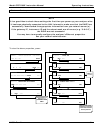
Model GFC7000E Instruction Manual Operating Instructions
04584 Rev A1 96
6.12. SETUP – DAS: Using the Data Acquisition System
(iDAS)
The MGFC7000E analyzer contains a flexible and powerful, internal data acquisition system (iDAS)
that enables the analyzer to store concentration and calibration data as well as a host of
diagnostic parameters. The iDAS of the MGFC7000E can store up to about one million data points,
which can, depending on individual configurations, cover days, weeks or months of valuable
measurements. The data are stored in non-volatile memory and are retained even when the
instrument is powered off. Data are stored in plain text format for easy retrieval and use in
common data analysis programs (such as spreadsheet-type programs).
The iDAS is designed to be flexible, users have full control over the type, length and reporting
time of the data. The iDAS permits users to access stored data through the instrument’s front
panel or its communication ports. Using APICOM, data can even be retrieved automatically to a
remote computer for further processing.
The principal use of the iDAS is logging data for trend analysis and predictive diagnostics, which
can assist in identifying possible problems before they affect the functionality of the analyzer. The
secondary use is for data analysis, documentation and archival in electronic format.
To support the iDAS functionality, Teledyne Instruments offers APICOM, a program that provides
a visual interface for remote or local setup, configuration and data retrieval of the iDAS (Section
6.12). The APICOM manual, which is included with the program, contains a more detailed
description of the iDAS structure and configuration, which is briefly described in this section.
The MGFC7000E is configured with a basic iDAS configuration, which is enabled by default. New
data channels are also enabled by default but each channel may be turned off for later or
occasional use. Note that iDAS operation is suspended while its configuration is edited through the
front panel. To prevent such data loss, it is recommended to use the APICOM graphical user
interface for iDAS changes.
The green SAMPLE LED on the instrument front panel, which indicates the analyzer status, also
indicates certain aspects of the iDAS status:
Table 6-21: Front Panel LED Status Indicators for iDAS
LED STATE iDAS Status
OFF System is in calibration mode. Data logging can be enabled or disabled for this
mode. Calibration data are typically stored at the end of calibration periods,
concentration data are typically not sampled, diagnostic data should be collected.
BLINKING Instrument is in hold-off mode, a short period after the system exits calibrations.
IDAS channels can be enabled or disabled for this period. Concentration data are
typically disabled whereas diagnostic should be collected.
ON Sampling normally.
The iDAS can be disabled only by disabling or deleting its individual data channels.
6.12.1. iDAS Structure
The iDAS is designed around the feature of a “record”. A record is a single data point of one
parameter, stored in one (or more) data channels and generated by one of several triggering
event. The entire iDAS configuration is stored in a script, which can be edited from the front panel


















